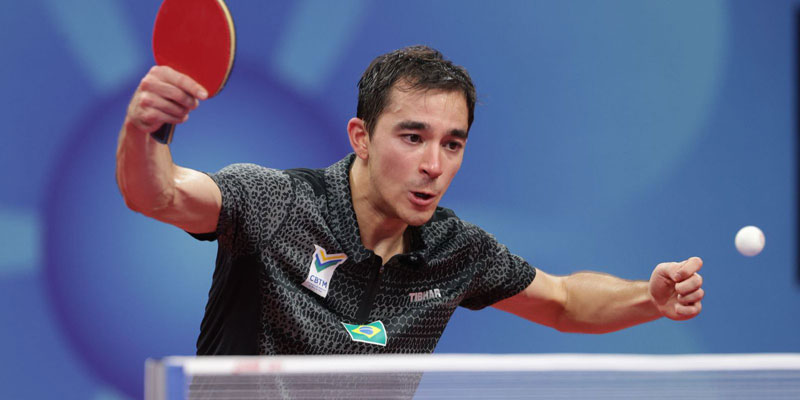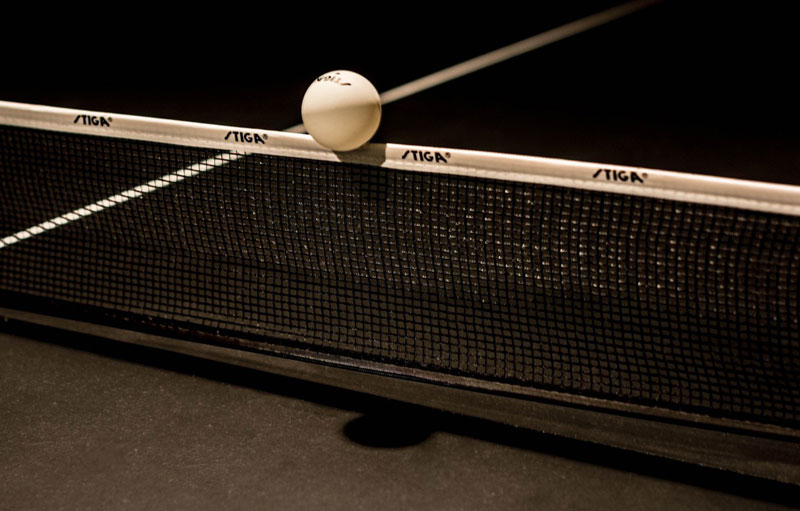One of the basic table tennis rules is about making a good return.
But what does that mean? Find out here…
Striking the ball - what is a good return?

Rule 2.05.07 states that …
A player strikes the ball if he or she touches it in play with his or her racket, held in the hand, or with his or her racket hand below the wrist.
This means that all of the following are legal and will constitute a good return.
You can hit the ball with …
- the rubber on your table tennis racket, or
- the edge of your table tennis racket, or
- the handle of your table tennis racket, or
- any part of your racket hand below the wrist, including the fingers of your racket hand
However … your hand is only your racket hand if it’s holding your table tennis racket. This means that you can’t drop your racket and then hit the ball with your hand … because your hand is no longer your racket hand.
Additionally, you can’t make a good return by throwing your table tennis racket at the ball. You must be holding your racket when it hits the ball for it to be a good return.
Of course, you could transfer your table tennis racket from one hand to the other hand because your other hand would then become your racket hand … but that’s quite difficult to do!
Move the table
Rule 2.10 states…
Unless the rally is a let, a player shall score a point if an opponent, or anything an opponent wears or carries, moves the playing surface.
This means that if you cause the table tennis table to move whilst the ball is still in play, you lose the point.
This usually happens when you rush forward to play a shot. After you’ve played your shot, your forward momentum can cause you to move the table.
However, if the ball wasn’t in play when you moved the table tennis table, there’s no penalty. For example, once the ball has bounced a second time (either on the table, floor, surroundings, or hits your opponent), the ball’s no longer in play.
Touching the playing surface
Rule 2.10 also states that…
Unless the rally is a let, a player shall score a point if an opponent's free hand touches the playing surface.
This means that if you touch the playing surface (i.e. the top of the table tennis table) with your hand which is not holding your racket whilst the ball is still in play, you lose the point.
So, if you’re right handed and have your racket in your right hand, and you touch the playing surface with your left hand, you lose the point.
However, as long as you do not move the table, you can touch the table with your racket or any other part of your body without penalty.
Touching the table when the ball is not in play
When the ball is not in play, there’s no penalty for touching the table.
So you’ll often see players wiping the sweat / perspiration from their hands, near the net. (This part of the table is the least used portion of the table during a rally).
They do this because you’re only allowed to use a towel after every 6 points, so some players use the table at other times.
The ITTF recently said that they were going to try to discourage this, but they do not seem to be doing anything yet.
However, for many players it just becomes a habit or another ritual they perform during a match, and many players won’t even realise that they’re doing it so often, until you point it out to them.
Also, some players do it in order to slow the game down, as it takes a few moments to wipe your hand and then return to the end of the table ready to serve or receive.
The umpires should be stopping players doing it, but it’s not against the rules yet.
Touching the net

Rule 2.10 also states that…
Unless the rally is a let, a player shall score a point if an opponent, or anything an opponent wears or carries, touches the net assembly.
This means that if you touch the table tennis net or the net posts whilst the ball is still in play, you lose the point.
As with moving the table tennis table, this usually happens when you rush forward to play a shot and your forward momentum may cause you to touch the net.

